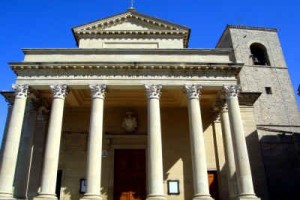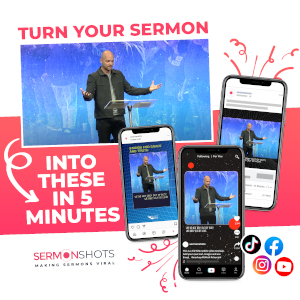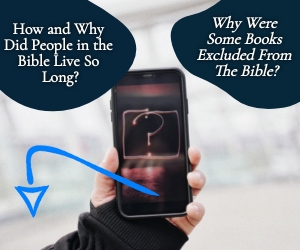Where did the term separation of church and state come from? Is it in the Constitution? Is it in the Bill of Rights? Perhaps it’s one of the Amendments. Is there such a law?
Origins of the Term Separation of Church and State
The term separation of church and state has been used, misused, and abused to mean separation of church from state. But where did this term come from and is it a federal law? Surprisingly, you won’t find it in the U.S. Constitution, the Bill of Rights, the Amendments or in any federal statute even though 69% of Americans believe it is. Yet others think it’s in the First Amendment. It most certainly is not. The phrase separation of church and state originated from Thomas Jefferson on January 1st, 1801. Jefferson used this metaphor in a letter sent to the Danbury Baptist Association of Connecticut. Jefferson used the term “wall” to make clear that the government was not to interfere with any religious practice. His intent was most certainly not to keep religion or religious symbols out of the public, state, or governmental offices or property. The term separation of church and state has been taken completely out of context and made into a pretext to say “keep religion out” of public, state, or government property or offices. This term has basically replaced what the First Amendment really says even though the words “separation of church and state” is not even in it!
Interestingly, Jefferson attended worship services in the place that most politicians today would believe was illegal…in the House Chambers of the U.S. Capital Building. Why would Jefferson believe that religion should be removed from the state and then hold worship services on federal property and at the same place where the Ten Commandments were displayed? Ironically, the term separation of church and state did appear in the constitution; of the former U.S.S.R.!
The First Amendment
The First Amendment of the U.S. Constitution is not a restriction of religion from the state but a restriction of the establishing of a state sanctioned and state-supported religion. It does not mean that the Ten Commandments should be taken out of the public square, from government or state offices, the taking down of crosses from public roadways or preventing the free exercise of Christian religion from being seen by the public. Here is what the First Amendment in reality says and what it doesn’t say:
Congress shall make no law respecting an establishment of religion, or prohibiting the free exercise thereof; or abridging the freedom of speech, or of the press; or the right of the people peaceably to assemble, and to petition the Government for a redress of grievances.
Notice that Congress, which consists of the House of Representatives and the U.S. Senate, are not to make any law respecting any establishment of a religion. The original intent was to keep the state from sanctioning or sponsoring a particular religion as the official religion. Neither is it to prohibit the free exercise or expression of religion. There is nothing in this that says religion should be removed from public, state, or government offices or property. It is simply restricting Congress’s establishing a specific religion itself. As the First Amendment says, “prohibiting the free exercise thereof” means no one should prohibit religious practices anywhere in this country. Instead of Jefferson’s original intent to not restrict the freedom of religion, it has become a law to restrict religion, religious freedom, religious expression and confine it to only one’s place of worship or at home. Rather than being a prohibition of the free exercise of religion, it has been placed on its head and has been contorted to mean religion is to be restricted from the public square and state and federal places. If Jefferson meant that, then he was a hypocrite because the first places of worship where the seat of government was were in the federal offices themselves!
Thomas Jefferson’s Original Intent
Thomas Jefferson wanted a wall of separation from there being a state-church. This is what many whom fled from England experienced; where the church and state were one and the same. He was concerned that the government would fund religion as they did in England and that religious worship at a state-church would be deemed compulsory. In his memoirs, he wanted to make sure that the state would not impose their own ideology or theology upon all churches. The U.S. Supreme Court’s decision concerning separation of church and state is clearly a violation of the U.S. Constitution itself. This was most certainly not the founding fathers’ intent. The separation of church and state is not found in the U.S. Constitution, the Bill of Rights, the Amendments, or in any legal document in the United States. It is the U.S. Supreme Court’s job to enforce the law, not make laws. The U.S. Supreme Court has also violated its original mission. They have been making laws, they have invalidated laws, and they have declared them constitutional or not. This is not their job…this is the job of Congress. If there should be any separation, it should be for the Supreme Court to act as a court and judge whether cases are true or not. Let Congress do their job of passing, writing or restricting laws. If anything, the Supreme Court should be separated from making laws or declaring them invalid. It would be better to say let there be a “separation of the court from lawmaking“, or “separation of the court from the state.” Maybe the First Amendment would better read “The U.S. Supreme Court shall make no law. Let Congress make the laws. That is their job!“
Want to see what else Jack is writing?
Take a look here:









 Welcome to What Christians Want To Know! The mission of this site is to equip, encourage, and energize Christians. Look for regular updates including Bible Verses, Bible Stories, Christian Quotes, Christian Answers, and much more. Find out
Welcome to What Christians Want To Know! The mission of this site is to equip, encourage, and energize Christians. Look for regular updates including Bible Verses, Bible Stories, Christian Quotes, Christian Answers, and much more. Find out 









